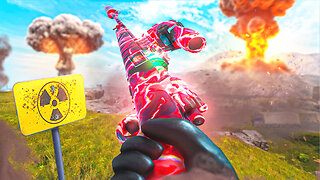Premium Only Content

Top 10 Catastrophes that Shook the World
"Have you ever considered how a disaster can change the course of history?" It's a thought-provoking question, isn't it? Disasters, by their very nature, are unpredictable and often unfathomable in their magnitude. They have the power to alter civilizations, reshape landscapes, and irrevocably change lives, often in the blink of an eye.
Consider for a moment, the vast and ever-changing landscape of our planet. Now imagine it being drastically altered by a single event. A powerful earthquake that splits the ground beneath our feet, a volcanic eruption that engulfs entire cities in molten lava, a hurricane that wipes away communities in a single, furious sweep, or a tsunami that swallows coastlines whole. These are not mere hypotheticals, but the harsh and brutal realities that have been experienced by countless civilizations throughout history.
The unpredictability of these disasters is what makes them so devastating. They strike without warning, leaving in their wake a trail of destruction and despair. And yet, in the face of such adversity, humanity has often shown an incredible ability to adapt, rebuild, and grow stronger.
In this video, we are going to explore some of the most significant disasters in the world. We will take a closer look at the events that led up to them, the immediate impact they had, and the long-term effects they left behind. It's a journey that will take us across continents and through time, shedding light on the sheer power and unpredictability of Mother Nature, and the resilience of the human spirit.
Disasters may be unpredictable, but their impact is undeniable. They serve as stark reminders of our vulnerability in the face of nature's raw power, but also of our ability to recover, rebuild, and rise from the ashes.
So, buckle up and prepare yourself for a journey that will both shock and inspire you. "Join us as we journey through time, revisiting some of the most devastating disasters in history." "We start our journey in 79 AD, with the eruption of Mount Vesuvius. In the heart of Italy, nestled near the vibrant city of Naples, Vesuvius roared to life, spewing smoke, ash, and molten rock miles into the sky. This wasn't just an eruption; it was a cataclysm, a force of nature unrivaled in its destructive power. In mere hours, the bustling, thriving city of Pompeii was buried under a layer of ash and pumice, preserving it in a macabre tableau of daily Roman life. The tragedy of Pompeii is underscored by the sheer scale of the disaster. An estimated sixteen thousand lives were lost, swallowed by the fiery maw of Vesuvius. But from this tragedy, a silver lining emerged. The ash-entombed city has become an archaeological treasure trove, offering a unique snapshot of Roman life, frozen in time. The Vesuvius eruption set a precedent for how we understand and study volcanic disasters."
-
 1:55:20
1:55:20
I_Came_With_Fire_Podcast
12 hours agoIRAN Tried to KILL HER for HACKING Mass SURVEILLANCE Of Women
14.6K3 -
![[ Sabotage Saturday ] Tekken 8 and CHiLL](https://1a-1791.com/video/fww1/0c/s8/1/r/W/j/T/rWjTy.0kob.1-small--Sabotage-Saturday-Tekken-8.jpg) 2:17:59
2:17:59
CHiLi XDD
3 hours ago[ Sabotage Saturday ] Tekken 8 and CHiLL
9.06K1 -
 LIVE
LIVE
The Mike Schwartz Show
2 hours agoTHE MIKE SCHWARTZ SHOW with DR. MICHAEL J SCHWARTZ No King's (Morons) Day Special!
56 watching -
 30:08
30:08
The Rubin Report
1 day agoIs the Total Collapse of Iran Near? | Naftali Bennett
43.8K110 -
 LIVE
LIVE
MrR4ger
5 hours agoMIDNIGHT R4GE - THE BORNLESS< GEARS OF WAR BETA< BF2
131 watching -
 LIVE
LIVE
Pepkilla
4 hours agoZeeVerse and Pixel ~ Crypto
86 watching -
 8:42
8:42
Degenerate Jay
5 hours ago $5.20 earnedWow! Silent Hill 1 Remake Is Really Happening!
35.9K3 -
 LIVE
LIVE
Shield_PR_Gaming
2 hours agoCarXStreet with racing wheel! Should Rumble Rants Non-Taxable Donations! Are they already!?
55 watching -
 LIVE
LIVE
GritsGG
1 day agoSpecialist Every Game! 👑 2587+ Ws
283 watching -
 1:27:21
1:27:21
Game On!
14 hours ago $5.83 earnedGame 4 NBA Finals is One We Have NEVER Seen Before!
41.5K4